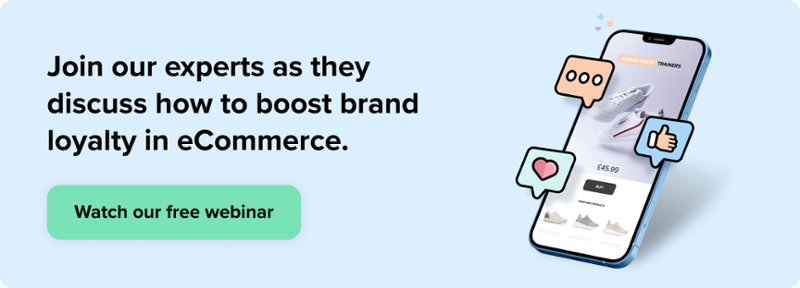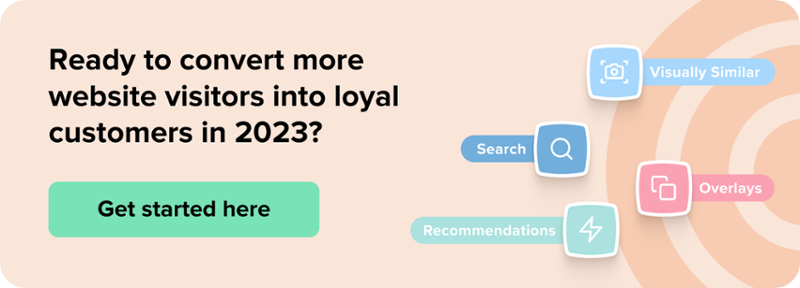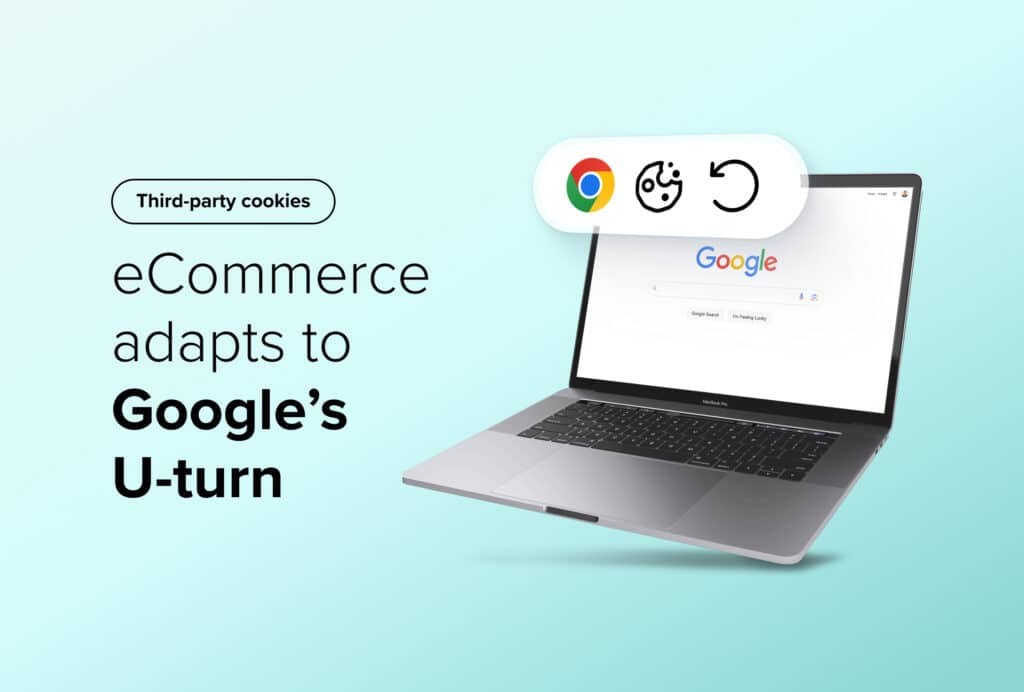The 4 Best Customer Retention Strategies For Your eCommerce Site
By Sophie Walker • Last updated: Friday Apr 26th, 2024
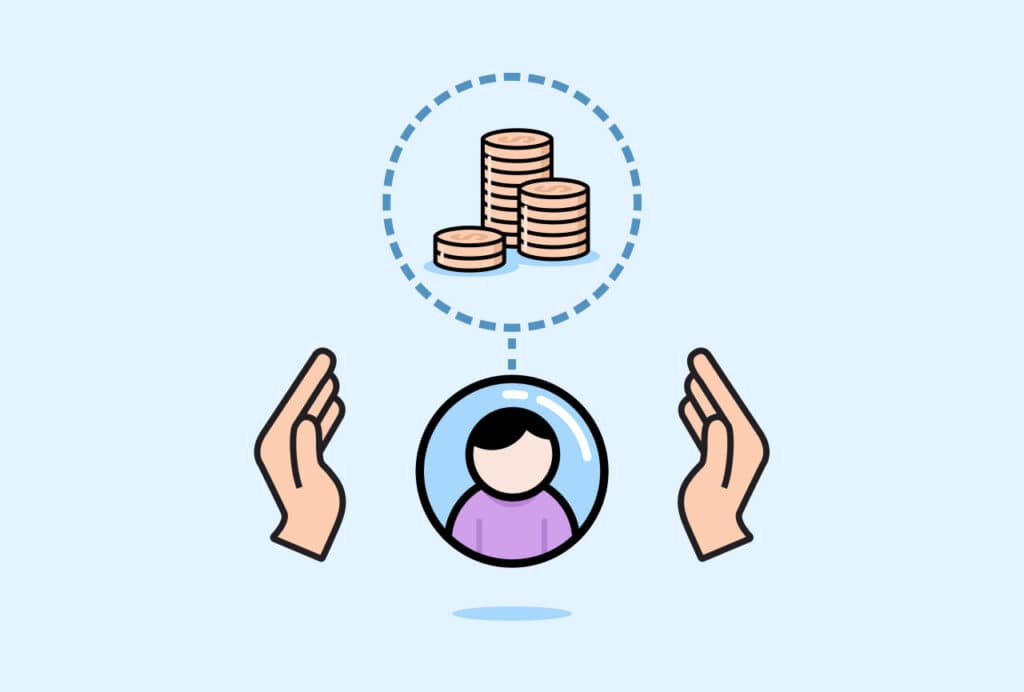
eCommerce retailers often place more emphasis on acquiring new customers and reaching wider audiences, when they should be focusing on nurturing those shoppers who have already purchased with them.
While acquiring new customers is essential to a brand’s growth, it’s important not to overlook your existing customer base. After all, on average 65% of a company’s business comes from existing customers.1
This means retailers should consider upgrading their strategies to focus on their current customers and take steps toward building a loyal customer base.
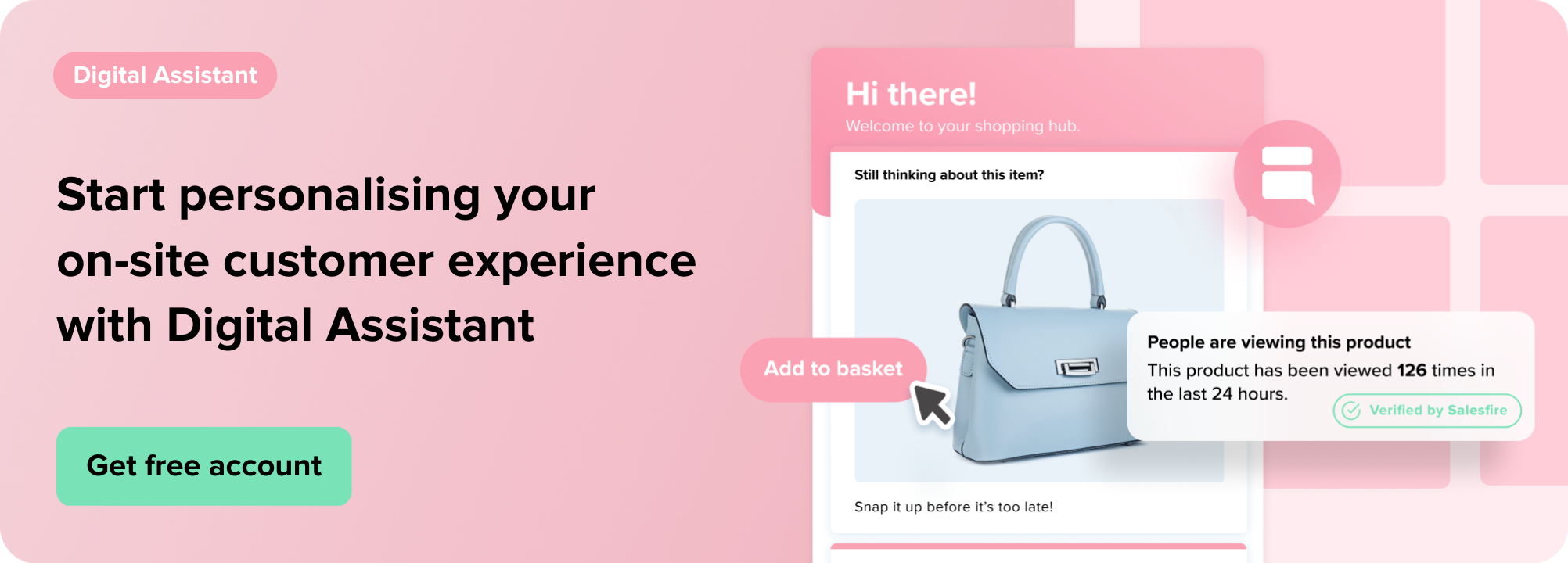
Rising customer acquisition costs
With an estimated 26 million eCommerce sites across the globe, the cost of PPC and paid campaigns are rising as more businesses compete for the same keywords and ad space.2
In addition, studies suggest customer acquisition costs have increased by a whopping 60% in the last five years.3
To combat these rising costs, it’s essential for retailers to focus on creating robust shopper retention strategies that nurture their existing traffic into repeat, loyal customers instead of putting all their resources into finding new ones.
After all, it’s 5 to 25 times more expensive to acquire a new customer than it is to retain an existing one, so it quite literally pays to focus your efforts on improving your customer retention rates.4
Customer retention — the key to survival in 2023
In the current economic climate, customer retention is more important than ever. Your business is staring down the barrel of rising costs of living, lower spending power, and a national recession. Customer retention has a long list of benefits, but it’s especially useful to survive the trying months ahead.
- Existing customers are 50% more likely to try a new product.5
- Your likelihood of selling to an existing customer is 60%-70%, while selling to a new customer only has a 5%-20% success rate.6
Suggested reading: Curious to know more about gearing up for 2023? We talk all about the trends we expect to dominate the market in our blog, The 2023 eCommerce Trends You Need to Look Out For.
Customer retention vs churn rate
On the flip side of shopper retention is customer churn rate, which is the number of customers who stop buying from your brand or choose not to renew their subscriptions.
A high churn rate will have an impact on the growth of your business and may mean that you’re failing to build trust with your customers.
To resolve this, you need a strong marketing strategy that focuses on growing meaningful relationships and encouraging shoppers to buy from your brand again.
Why is customer retention so important?
A company’s ability to retain customers is fundamental to its short and long-term success. It offers an indication of a shopper’s satisfaction with your brand, your product or service, and the overall customer experience.
Existing customers have built up trust with your brand and therefore are:
- More receptive to your marketing materials.
- More likely to engage in word-of-mouth marketing.
- More inclined to share social media reviews that allow you to organically reach new audiences.
Data shows that 44% of businesses focus on customer acquisition, while only 18% focus on customer retention. This goes to show that by prioritising the customers you already have, you’ll be beating out the competition.7
By improving customer retention rates you can also maximise the value of each shopper that lands on your site and increase customer loyalty.
How can I implement customer retention in my strategy?
It’s easy to see why eCommerce retailers should focus on shopper retention in their strategy, however, loyalty in the online marketplace is not easy to come by.
As eCommerce competition continues to grow, it’s fair to say that modern shoppers are in general less loyal to brands, with 61% of retailers citing customer retention as one of their biggest challenges.8
However, there are many ways you can create customer retention strategies that work.
Let’s delve into some of the ways you can nurture your shoppers through your marketing materials and boost your customer retention rates.
1. Nurture with email marketing
One of the most effective and affordable ways to communicate with your customers is through email marketing.
Emails offer a great opportunity to showcase your latest content, strengthen relationships with shoppers, and upsell products. In fact, 1 in 3 retail email list subscribers say they have purchased something from a brand whose emails they receive.9
You can create an email marketing strategy that nurtures your shoppers into loyal, repeat customers by:
- Sending out discounts and incentives: Encourage shoppers to return to your website by sending them out incentives or exclusive promotions to reinject them back into the buyer’s funnel.
- Making it personal: 80% of people who received personalised emails from vendors would be likely to purchase from them again.10 Personalise your email campaigns by including names in the subject line and creating targeted content that will grab the attention of your shoppers.
- Creating a strong brand personality: Injecting your brand personality into your email campaigns means you build up a voice that your shoppers come to recognise.
- Consider sending regular, branded marketing emails or a newsletter to your existing shoppers to increase feelings of loyalty.
- Encouraging further purchases: As your shoppers have already bought into your brand and built up a level of trust, it’s easier to upsell and cross-sell products to them. So, consider focusing your email content on your latest product offering to inspire further purchases.
With regular, personalised campaigns and a retention-focused email marketing strategy, you can bring your brand back to the forefront of your customers’ minds and boost loyalty.
Things to consider: Utilise Digital Assistant alongside your Salesfire email tool to send an email reminder to your shoppers who may have abandoned their cart, and encourage them to return back to your site to complete their purchase.
Pro tip: We talk about all this and more in our blog, 5 Ways Email Marketing Enhances the Customer Journey.
2. Replicate the social media experience
Consumers are increasingly using social platforms to discover products they want to buy, with 49% of 16-24-year-olds stating that they look for inspiration on social media.11
As social platforms evolve and social media usage continues to grow, brands should consider modifying their eCommerce strategy to capitalise on this new form of product discovery.
As a starting point, online retailers should look to optimise their websites to meet the needs of contemporary shoppers who are accustomed to highly personalised, intelligent social media algorithms that display tailored content based on their personal tastes.
Some of the ways you can replicate social media algorithms on your website are:
- Integrating Visually Similar Search: 62% of Gen Z and millennial shoppers want visual search capabilities when shopping online.12 Visually Similar allows shoppers to discover a close visual match to the product they’re viewing on social media directly from your product catalogue.
- Suggesting personalised Recommendations: Deliver inspiration to your shoppers at every turning point with accurate, AI-driven recommendations based on shopper behaviour patterns.
- Displaying recently viewed products: You can use Digital Assistant to display recently viewed items to your new and returning shoppers, working to inspire purchases and further tailoring the browsing experience.
Personalisation is something that users have come to expect when shopping online, with 49% of customers saying they become more loyal to a brand after a personalised shopping experience.13
You can create an on-site experience that mimics the social media product discovery experience with intelligent, data-driven personalisation tools.
3. Offer customer support
When shoppers are making a purchase it’s only natural they might need some more information about the product they’re looking at or support throughout the checkout process.
Delivering stand-out customer service when customers are in need of support can help you build brand loyalty and generate repeat business.
To provide the best customer experience on your eCommerce website you can:
- Offer live chat: This allows shoppers to gain answers about the products they want to buy, ask any questions about delivery or returns, and feel informed enough to complete their purchase.
- Provide omnichannel support: Tech-savvy modern shoppers are present on social media, apps, your website and email. Omnichannel strategies involve offering considered communications and support across all these channels.
- Consider post-purchase support: Offering customer assistance doesn’t end when your shopper has made their purchase. Providing post-purchase support by checking in for feedback, prompting reviews, and nurturing your shopper through strong communication will work to increase customer retention.
Ensuring you offer the right customer care is crucial for retaining customers and should be at the forefront of your shopper retention marketing strategy.
When customers feel looked after by a brand, they are not only more likely to convert but will also be more inclined to return to your business knowing any issues that arise will be quickly resolved.
4. Driving urgency
Shoppers are faced with a multitude of different options when browsing online.
Because of this, your shoppers might need a final push to finalise their purchase and one way to do this is to leverage the concept of urgency.
You can create urgency and make shoppers aware that your product is high in demand but low in supply using the scarcity principle.
The scarcity principle increases the perceived value of your products and capitalises on the fear of missing out.
Online retailers can leverage scarcity by alluding to limited stock, taking part in flash sales, and offering time-sensitive discounts.
With Digital Assistant you can display influential campaigns throughout the buyer’s journey to encourage quicker purchases with campaigns such as:
- Product purchases and product views: Highlight the popularity of products by showcasing product views and purchases directly on your product pages, letting your shopper know that the item they’re viewing won’t be around forever.
- Reserve stock countdown: Include a countdown timer to increase urgency and let users know the basket they have built is only reserved for a certain amount of time.
- Personalised Overlays: Display custom messaging at the right time in the customer journey, and offer limited-time discounts and incentives in order to prevent a bounce off your site.
You can make your shoppers feel like the deal they’re viewing is now or never and increase the urgency in finalising their purchase.
By placing a higher value on your products and making your shopper feel like your supply is low, you leave your shopper ecstatic about securing their purchase and encourage return visits to your site in order to find similar deals.

Customer retention strategies that work
Customer retention rate is a key metric that provides crucial insights into shopper satisfaction.
By nurturing the shoppers who have already bought into your brand you can retain your customers, build loyalty and gain a longer-term revenue stream.
Offering customer support at every turning point, creating robust email marketing campaigns, and optimising your on-site experience all work to create a customer retention strategy that delivers results for your business.
1 Customer Acquisition vs Retention Costs Summary – Markinblog
2 Study: What Is The Number of eCommerce Sites Worldwide in 2022 – Markinblog
4 The Value of Keeping the Right Customer – Harvard Business Review
5 The Value Of Investing In Loyal Customers | Forbes
6 Don’t Get Lazy About Your Client Relationships | Forbes
7 70 Powerful Customer Retention Statistics You Need To Know – Semrush
9 Email Marketing Statistics You Need To Know for 2023 – Optinmonster
10 Why is Personalisation So Important In Email Marketing – Mailing Manager
11 Gen Z holds the key to the eCommerce future – Wundermanthompson
12 Generation Z and millennial shoppers now prefer to buy using their mobile phone – Internet Retailing
13 The “Dopamine Effect: The Psychology Behind Personalised Marketing – Task Software
See how Salesfire can help you optimise your product discovery experience, email one of our experts at [email protected] or book a free demo of our personalisation tools.
